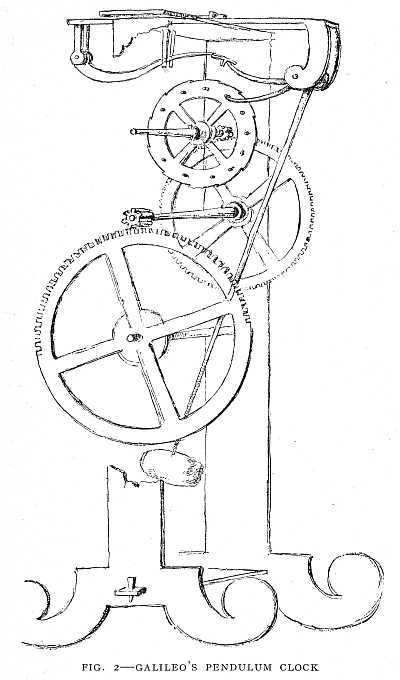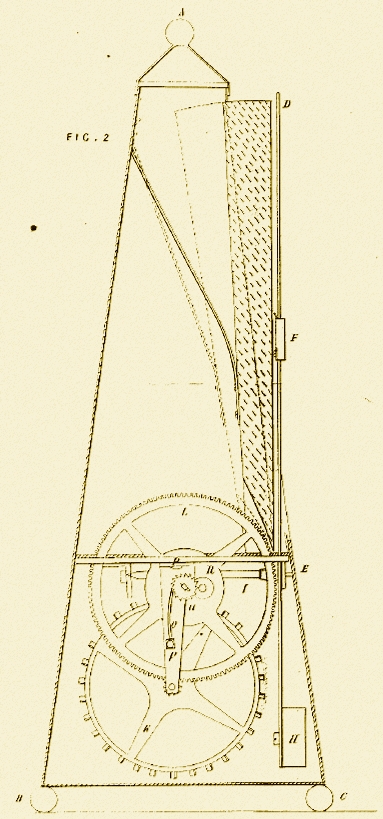
A Brief History of the Mechanical Metronome
A 20th Century Phenomenon
The use of a metronome while practicing is one of the most ubiquitously recommended methods for mechanical improvement. This contemporary use, however, is a product of shifting pedagogical and aesthetic priorities in the 20th century.1 Until the mid-20th century, practicing and playing to a constant metronomic click was uncommon and frequently derided as mechanical and devoid of musical feeling. Many Romantic and Classical composers including Johannes Brahms completely refused to employ the metronome in any capacity. The 20th century has celebrated the rise of the mechanical by even bringing it into the concert space through works such as György Ligeti’s Poème Symphonique for 100 mechanical metronomes.
Organic Origins
Measuring and subdividing time into meaningful intervals has always been a human endeavor that necessitated visual representation devices ranging from sundials and water clocks to astronomical clocks and simple pendulums. All these devices rely on nature to function – be it in the form of controlled dripping, showing the apparent position of the sun in the sky or by utilizing simple gravitational pull. Similarly, pre-metronome treatises frequently equated tempos to physical events such as walking, a heartbeat or pulse or swinging of an arm.2 The resulting idea that musical time is linked to a physical feeling dominated the discourse around the mechanization of music well into the 20th century.
A Newly Mechanized World

The rise of the mechanical metronome is closely linked to the rise of mechanical time telling during the Industrial Revolution and the need for accurate, synchronized timetables for railroads.3 Up until that point, human life had been regulated by the sun and the seasons;4 the introduction of mechanical regularity meant a major shift in the feeling of passing time that would also be at the heart of the adoption of the metronome. The increased call for a measurement system of musical time toward the end of the 17th century prompted centuries of innovation that integrated current technological advances. Etienne Loulié’s Chronomètre from 1696 employed pendulum principles first explored by Galileo Galilei in 1581 to bring musical time measurement into the realm of scientific objectivity. The system of associating pendulum lengths with specific oscillation frequencies led to the beat per minute scale that is still in use today. Loulié’s Chronomètre , however, did not produce a sound and so remained unobstructive to the aural experience of music making. The late 18th century saw the rise of a metronome without a pendulum but with several wheels and barrels by Anthony George Eckhardt in 17985 and a clockwork-based metronome by William Pridgins of York.6 Both devices distinguish themselves with an audible bell sound and the possibility to manipulate the speed. However, neither used a tempo scale that would be useful to modern musicians.
Maelzel: Father Time

Maelzel Patent Figure 1 
Maelzel Patent Figure 2
The metronome, as we know it, was patented by Johann Nepomuk Maelzel in 1815. Yet, Maelzel’s metronome cannot be truly credited to Maelzel since most of the mechanism, including the addition of a weighted counter pendulum, was actually designed by Dietrich Nikolaus Winkel in Amsterdam. Maelzel originally attempted to purchase Winkel’s technology; but, when Winkel refused, Maelzel took the design anyway and only added the gradated tempo scale to the swinging arm. Winkel attempted to fight the dissemination of the design through the Dutch Academy of Sciences but ultimately was powerless against Maelzel’s highly effective marketing machine.7 During his lifetime, Maelzel was famous as an inventor of musical automatons which he presented in sensational expositions throughout Europe and North America. Yet, machines imitating life in motion and sound was often received with a mix of awe and distrust – the idea that a soulless object could make “music” and move like a living being was seen as illusion and magic. As an extension of this clockwork magic, the metronome was met with an ambivalent reception and skepticism. As Maelzel’s friend, Ludwig van Beethoven is traditionally thought of as a champion of the metronome. And indeed, Maelzel and Beethoven had an intertwined relationship that went beyond the metronome: Maelzel fashioned the ear trumpets for Beethoven’s increasing deafness and also persuaded him in 1813 to write a piece for the panharmonicum, Maelzel’s newest musical automaton. When Maelzel then claimed proprietary rights to the Battle Symphony (Wellington’s Victory), Beethoven initiated legal proceedings. Nevertheless, Beethoven’s publication of a tempo annex for his extant symphonies in 1817 cemented the importance of Maelzel’s metronome in musical life. Yet, Beethoven did not always embrace the metronome, stating, according to his secretary Anton Schindler, “No metronome at all! Those who have a right feeling do not need it, and those who have not, will not be helped by it.”8
Victorian mass production
Beethoven’s assessment of the metronome’s usefulness foreshadowed a shift in musical pedagogy in the late 19th century. The Victorian middle class demanded predictable education outcomes for their amateur daughters and consequently also required more tempo instructions when learning a new piece of music. This created a push towards a repetitive, scientific pedagogy which, given enough repetitions, would create an accurate performance – an objective measure of success and quality. One of the first pedagogues to argue for the continuous use of the metronome in practice was American piano pedagogue Albert Ross Parsons in his treatise The Science of Pianoforte Practice (1886). Mass manufacturing of clockwork metronomes made the devices increasingly cost effective and accessible, so that the periodical Music declared in 1897 that “A METRONOME SHOULD BE ON EVERY PIANO.”9 This push for the metronome stood in stark contrast to many composers’ attitude and aesthetic, with Brahms saying, “good friends have talked me into putting [metronome marks] there, for I myself have never believed that my blood and a mechanical instrument go well together.”10
Standardized Training
This 19th-century opposition of artistic expression versus a scientification of pedagogy became more fully resolved in the 20th century in which “metronomic time became the primary rhythm.”11 Psychologists used the metronome in the late 19th century to measure human behavior with particular interest in memory and response studies. The result was a mechanization of learning; even West Point Academy utilized the metronome for standardized training in 1918.12 Similarly, the application of experimental psychology to musical pedagogy, as promoted for example by Emile Jacques-Dalcroze’s Eurythmics, laid the foundation for new aesthetics in the 20th century that require strict rhythmic responses from the performer. This development towards ever more precise motions and subdivisions of a second is mirrored in the advancement of metronome technology. As electricity became more widespread, electric metronomes that eliminated the clockwork and moving arm in favor of a blinking light became possible. Nowadays, in the digital age, our ability to subdivide time is nearly infinite – metronome applications and software allow the modern musician to analyze their playing against any imaginable fraction of a note value or second. Infinite, scientific time division in performance has become a possibility and the precision of a performance honed by careful work with a metronome has become a standard expectation for professional musicians.
- Alexander Evan Bonus, “The metronomic performance practice: a history of rhythm, metronomes, and the mechanization of musicality,” PhD diss (Case Western Reserve University, 2010), 365.
- See Johann Joachim Quantz, Versuch einer Anweisung die Flöte traversiere zu spielen (Berlin, 1752), 201, paragraph 46.
- Ian R. Bartky, Selling the True Time: Nineteenth-Century Timekeeping in America (Stanford: Standford University Press, 2000).
- Bonus, “The metronomic performance practice: a history of rhythm, metronomes, and the mechanization of musicality,” 114.
- Rosamond E.M. Harding, The Metronome and it’s [sic] precursors (Henley-on-Thames: Gresham Books, 1983), 19.
- David Martin, “An early metronome,” Early Music 16, no. 1 (Feb. 1988): 90.
- Harding, The Metronome and it’s [sic] precursors, 23.
- Adolf Bernhard Marx, Introduction to the Interpretation of Beethoven Piano Works, translated by Fannie Louise Gwinner (Chicago: Clayton F. Summy Co., 1895), 68.
- Bonus, 401.
- Bernhard D. Sherman, “Metronome marks, timings, and other period evidence regarding tempo in Brahms,” in Performing Brahms: Early Evidence of Performance Style, Vol. 1, edited by Michael Musgrave (Cambridge: Cambridge University Press, 2003), 99.
- Bonus, 464.
- Bonus, 463.

